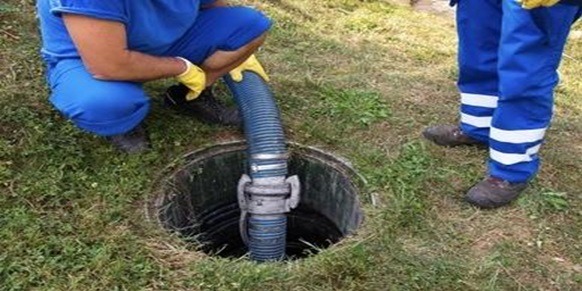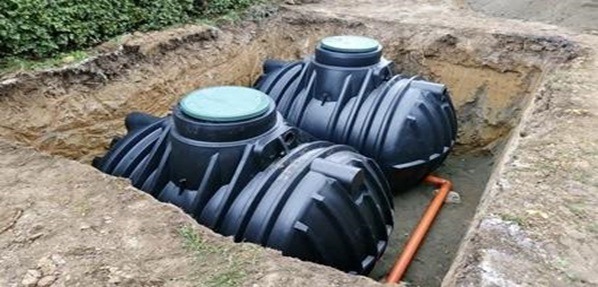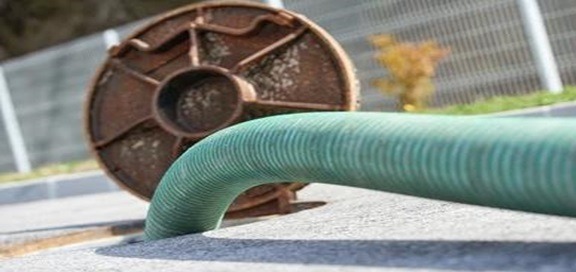Plumbing has a significant role in making our lives comfortable and prevents the spread of diseases. Also, the plumbing system serves as a source of the clean water that we drink. It removes the sewage and wastewater.
There are two methods involved in draining the wastewater from residential and commercial buildings. The first method includes tying the structures to municipal sewer lines, while the other process involves using a septic system.
The septic system is for individual property. On the other hand, the sewer lines connect multiple properties and networks of pipes to carry the waste to the municipal wastewater treatment facility. In addition, sewer lines are commonly found in urban areas, whereas septic tanks are on rural properties.
Here are the six types of septic tank systems that you should know.
The Septic System
A septic system is a connected network of components living underground using the natural process of treating wastewater. A typical septic system is in the homeowner’s backyard.
Some septic systems in rural areas experience disconnection from waste management facilities.
How Does Your Septic System Works
The septic system is in charge of the household wastes and deposits them into your septic tank. The septic tank separates and pretreats the wastes and oils in the wastewater.
Mostly, systems push the liquid wastewater from the tank and distribute it into a network of porous pipes. These pipes that branch away from your home and your septic tank slowly release the wastewater into the soil.
Some septic systems do not solely depend on releasing wastewater into the soil. Other types include using pumps, disinfecting solutions, an evaporation method, and gravity to help filter out wastewater through the sand. All of these are used before releasing the wastewater into the soil.
The estimated daily wastewater flow and soil conditions will coincide with the size of the drain. The soil type will correspond with the total number of square feet of drain field area needed.
What is a Septic Tank?
A septic tank is a waterproof structure specifically designed to be buried underground for some time. During the water treatment process, the septic tank will be the first stop. The waste material breakdown will happen here, helping filter solid wastes, scums, and oils from liquid waste also called the effluent.
Hard solids separate from lighter solids. The former will settle at the bottom of the tank, while the latter will float on top. Moreover, solid wastes will stay in the tank while the wastewater will continue to be discharged into the drain field for further treatment.
Keeping up with regular septic tank pumping is crucial for preventing various major issues and potential problems. By maintaining your septic system on a regular basis, you can avoid the need for costly repairs in the future. Make sure to schedule septic pumping in Atlanta to keep your system in top condition.
There are different types of the septic tank. The most common are concrete, plastic polyethylene, and fiberglass type.
What is a Drain Field and Piping System?
The drain field, which is also known as the soil absorption areas, is a part of the household septic system specifically designed to help filter the contaminants from the wastewater. It consists of a maze of trenches dug several feet deep. A septic tank has gravel, geo-fabric, and groundwater infestation to prevent animals from digging it up.
The trenches in these septic tanks contain pipes for dispersing the household water.
Types of Septic System
Conventional System
This type of septic system is commonly found at homes or small business locations. They do not serve a larger group of people in just one area.
components of a conventional system
- Wastewater Infiltration System. Also known as drain field. It is part of the Septic system that helps filter contaminants from entering the wastewater.
- Geofabric Layer. A layer is placed on top of the trench to prevent the contaminants from entering the gravel layer.
- Septic Tank. A buried watertight tank that receives and partially treats sanitary wastewater.
The wastewater flows out and into the septic tank. The effluent is piped from the septic tank up to the drain field. After the wastewater has been filtered through the drain field, the treatment process continues, and it will further flow into the soil.
Advantages: It can be easily repaired since most septic tank cleaning companies are familiar with this system.
Disadvantage: Difficulty in installing it to homes with smaller lots
Chamber System
Since the 1970s, this system has been serving its purpose. It is known to be an excellent alternative to the gravel field system. Chamber systems are commonly used in areas with a tendency of high water tables. The chamber system can alleviate the possibility of having poor drainage and messy back-ups.
This septic system needs a network of pipes and chambers, whereas the chambers are surrounded by soil. The purpose of the tubes is that they will remove the soil water from the house to the septic tank, up to the chambers. From then, the wastewater will drain into the soil.
Microbes coming from the soil will treat the wastewater before its draining process. It will release the treated water into the earth as it travels to the groundwater.
Advantages: Can be installed in areas with high water tables
Disadvantages: There is a risk for additional maintenance since there are added chambers involved.
Aerobic Treatment System
The aerobic treatment systems use oxygen and infuse it with the wastewater inside the septic tank. The oxygen infused with the wastewater allows the addition of nutrients to the wastewater, allowing it to begin the treatment process.
This system uses tanks for both pretreatment and the final treatment process. It can also have a system that uses tanks for pretreatment alone and another tank for the definitive treatment. The main goal of the aerobic system is to treat and disinfect safely and efficiently.
Advantages: This is recommended for areas with higher water tables
Disadvantages: Requires additional maintenance
Drip Distribution System
This type of system does not require the use of a traditional gravel-based drain field. This system utilizes piping laterals buried in shallow ground soil about six to twelve inches below the surface.
Since this system does not need a traditional drain field, it is more complicated, and necessary precautions must be taken when wastewater needs to be dispersed into the soil absorption area. If you want to guarantee yourself proper maintenance, Look for Affordable Septic Tank Pumpers and have an expert check your septic systems.
Advantages: Does not need the traditional wastewater field system
Disadvantages: Additional expense for electricity and maintenance
Sand Filter System
The Sand Filter system permits the wastewater to flow from a septic tank to a pump chamber. From the pump chamber, it will then follow the sand filtration system.
This system uses a large concrete box with sand. Once wastewater is pumped to the top of the box, the filtration process starts through the sand before being released in the soil absorption area.
Advantages: Recommended for areas with high water tables
Disadvantages: Requires frequent maintenance
Evapotranspiration System
The Evapotranspiration system is unique, unlike the other septic systems. It is enclosed with a waterproof field that is filled with layers of gravel and sand.
This system allows the wastewater to flow from the septic tank to the waterproof drain field. Slowly, the wastewater evaporates during the process. The Evapotranspiration System does not need to be filtered into the soil compared to other septic options.
Advantages: It is easier to use, and the installation and maintenance are low.
Disadvantages: Too much humidity and rainwater prevents the evapotranspiration system from functioning efficiently
Maintenance and Care Tips
While septic systems are often the last thing to be inspected in your home, a professional septic tank cleaning needs to check it regularly. You need to have it periodically checked by a professional septic tank cleaner. Septic tank cleaning Oklahoma City is often done by highly trained septic cleaners with relevant knowledge and experience adept with different septic systems.
The recommended interval for septic system inspection is once a year, and it must be pumped at least every six months. Solid waste matter can clog your pump and damage the drain field if you do not allow periodic pumping to be done. Look for a septic tank cleaning in Oklahoma City and have an expert check your septic systems.
Seeking a professional septic tank cleaner is by far the best option to maintain your septic system. However, you, too, can help in its maintenance by simply doing these things.
- Avoid flushing everyday household items like leftover food, wipes, paper towels, female sanitary products, and the like
- Do not flush harmful chemicals like paints, thinners, varnishes, oils, pesticides, and more when using a septic system.
- Do not leave your faucets open when not in use.
- Use eco-friendly products.
Final Thought
Often, your septic tank systems are not given the proper attention that they need. Some will have it checked when there is already an existing problem affecting their daily activities.
If you want easier maintenance and don’t live in high water, you can choose among conventional, evapotranspiration, and drip distribution systems. Nevertheless, if you reside in places with higher water tables, you can opt for a sand filter, aerobic, or chamber. The septic system that suits you best will depend on your situation. Contact a professional septic tank cleaner to guide you with your septic system issues



